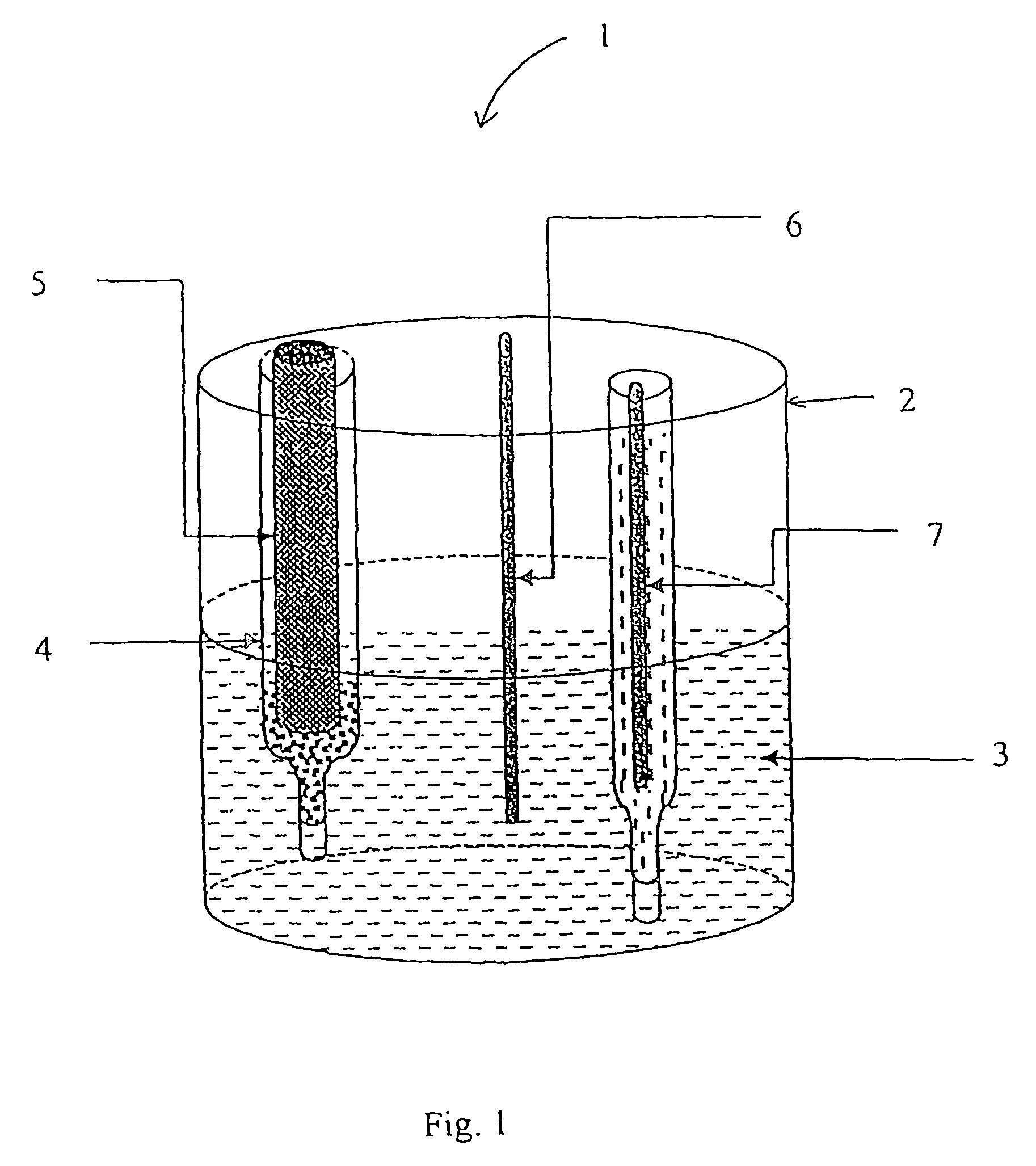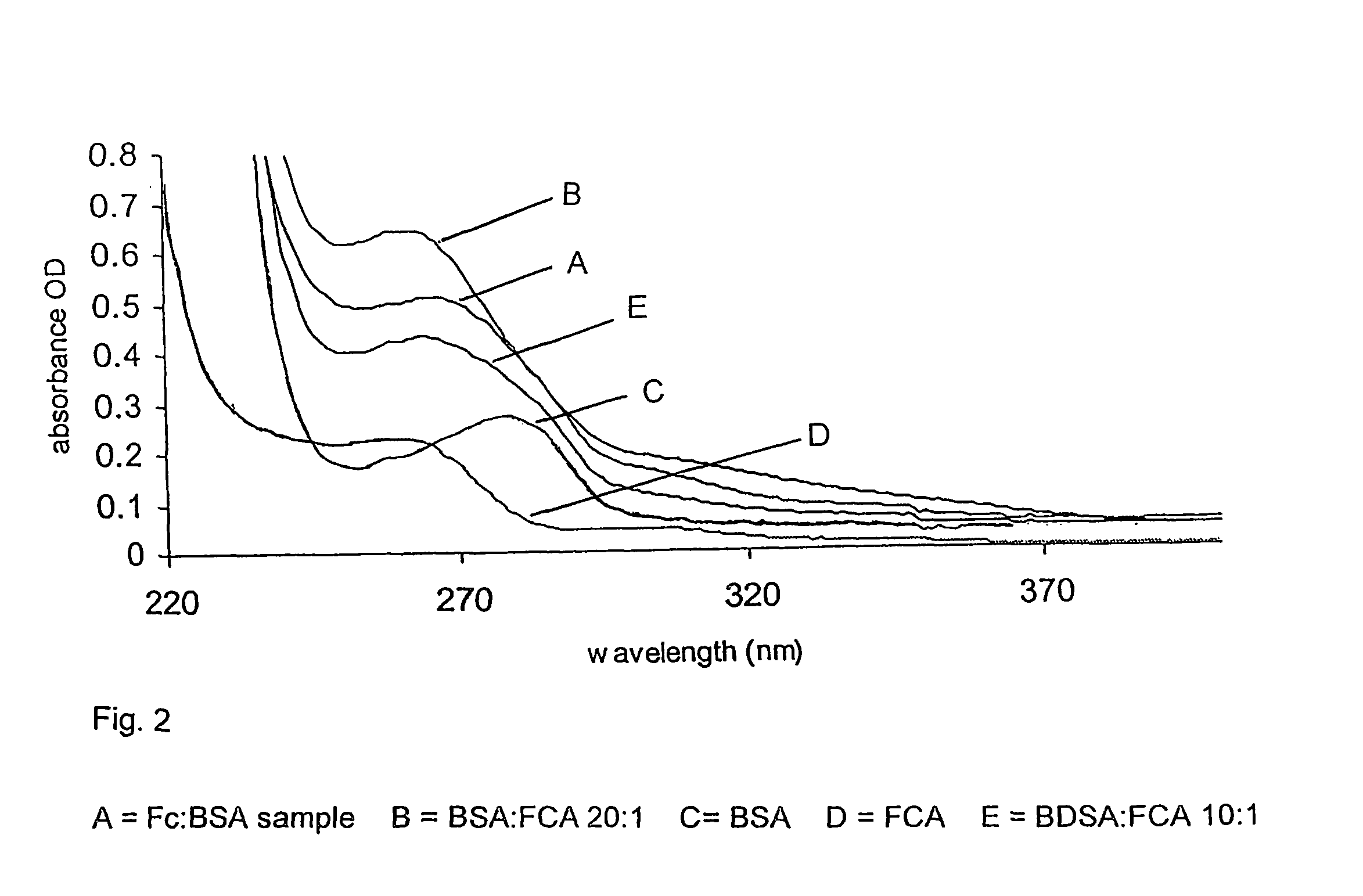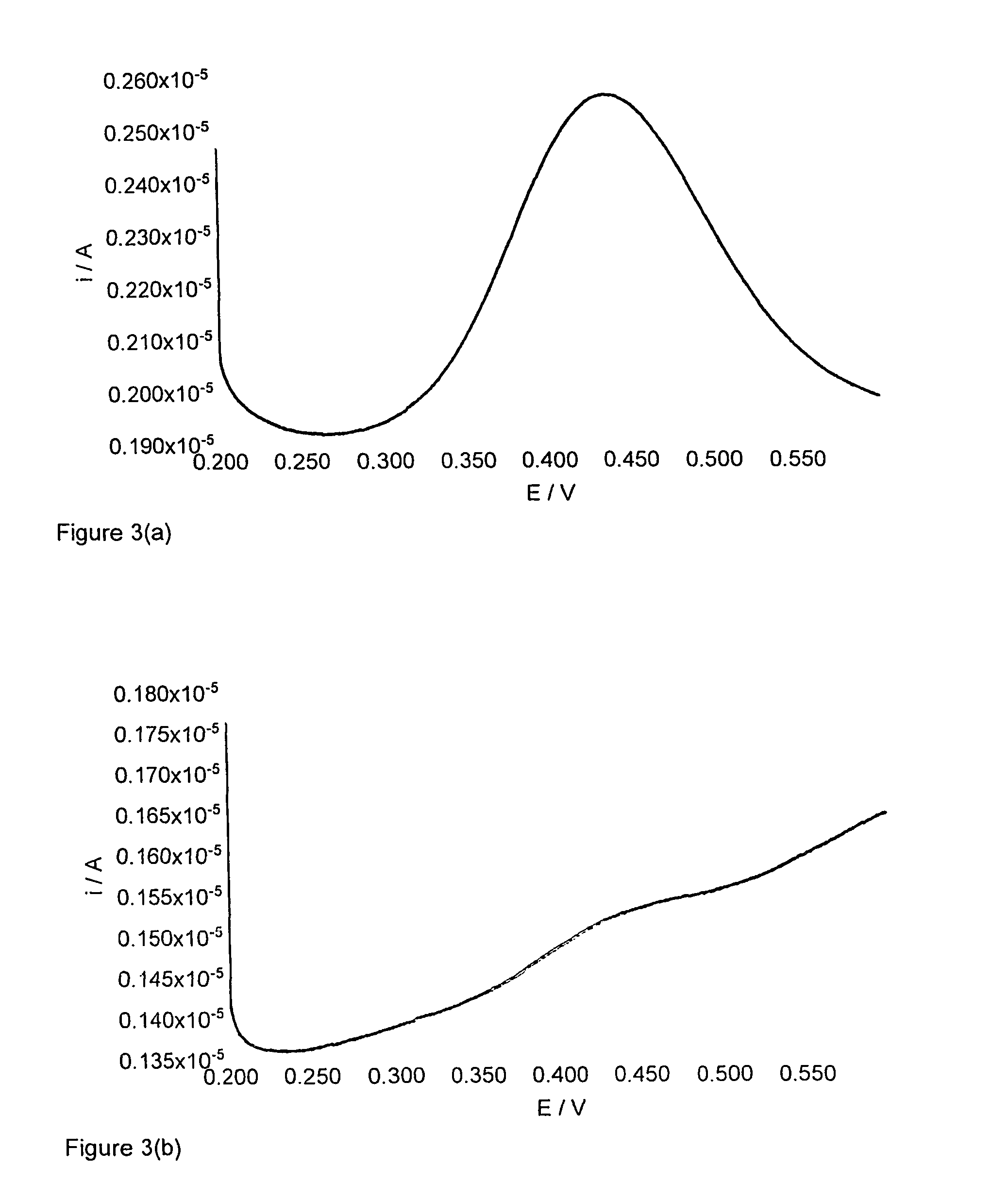Protease detection assay
a protease activity and assay technology, applied in the field of protease activity detection or assay, can solve the problem of lack of sensitivity of methods, and achieve the effect of facilitating their detection and more efficient electron transfer
- Summary
- Abstract
- Description
- Claims
- Application Information
AI Technical Summary
Benefits of technology
Problems solved by technology
Method used
Image
Examples
example 1
[0123]This Example describes the cyclic voltammetry method used in Examples 5 to 11 below.
[0124]The low volume cell of FIG. 1 was filled with approximately 10 ml sodium chloride solution (100 mM). A 200 μl aliquot of the sample for analysis was placed in the glass sample chamber which was then placed in the low volume cell along with the reference and counter electrodes. The electrodes were connected to the AUTOLAB electrochemical workstation and differential pulse voltammetry carried out using the parameters described in Table 1. Prior to analysis the glassy carbon working electrode was polished (using BAS polishing kit catalogue number MF-2060) followed by conditioning. Electrode conditioning consists of cyclic voltammetry, sweeping between +−1 volt in the appropriate background buffer.
[0125]
TABLE 1Parameters for differential pulse voltammetry:Parameter:Anodic sweepConditioning potential (V)0Conditioning duration (s)10Deposition potential (V)0Deposition duration ...
example 2
Synthesis of N-hydroxysuccinimide Ester of Ferrocenecarboxylic Acid
[0126]Ferrocenecarboxylic acid (303 mg, 1.32 mmol) and N-hydroxysuccinimide (170 mg, 1.47 mmol) were dissolved in dioxane (15 ml) and added with stirring to a solution of dicyclohexylcarbodiimide (305 mg, 1.48 mmol) in dioxane (3 ml). The mixture was stirred at room temperature for 24 hours during which time a precipitate was formed. The precipitate was removed by filtration, solvent was removed from the filtrate in vacuo and the resulting solid purified by silica gel column chromatography, eluting with 8:2 petrol:ethyl acetate. Yield 320 mg, 74%.
example 3a
Synthesis of Ferrocene Carbonyl Azide
[0127]Ferrocene carbonyl azide was prepared from ferrocenecarboxylic acid by reaction with oxalyl chloride and sodium azide.
PUM
| Property | Measurement | Unit |
|---|---|---|
| Permeability | aaaaa | aaaaa |
Abstract
Description
Claims
Application Information
 Login to View More
Login to View More - R&D
- Intellectual Property
- Life Sciences
- Materials
- Tech Scout
- Unparalleled Data Quality
- Higher Quality Content
- 60% Fewer Hallucinations
Browse by: Latest US Patents, China's latest patents, Technical Efficacy Thesaurus, Application Domain, Technology Topic, Popular Technical Reports.
© 2025 PatSnap. All rights reserved.Legal|Privacy policy|Modern Slavery Act Transparency Statement|Sitemap|About US| Contact US: help@patsnap.com



